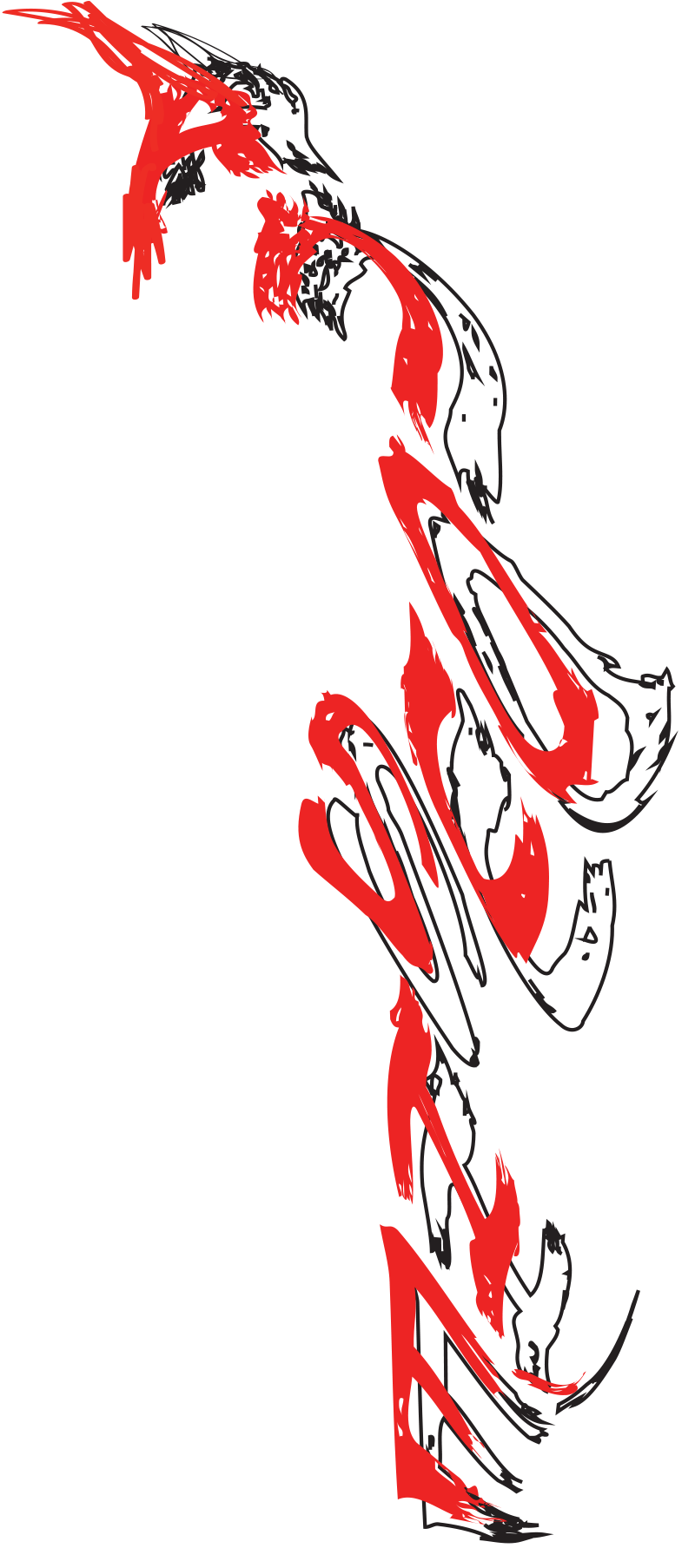

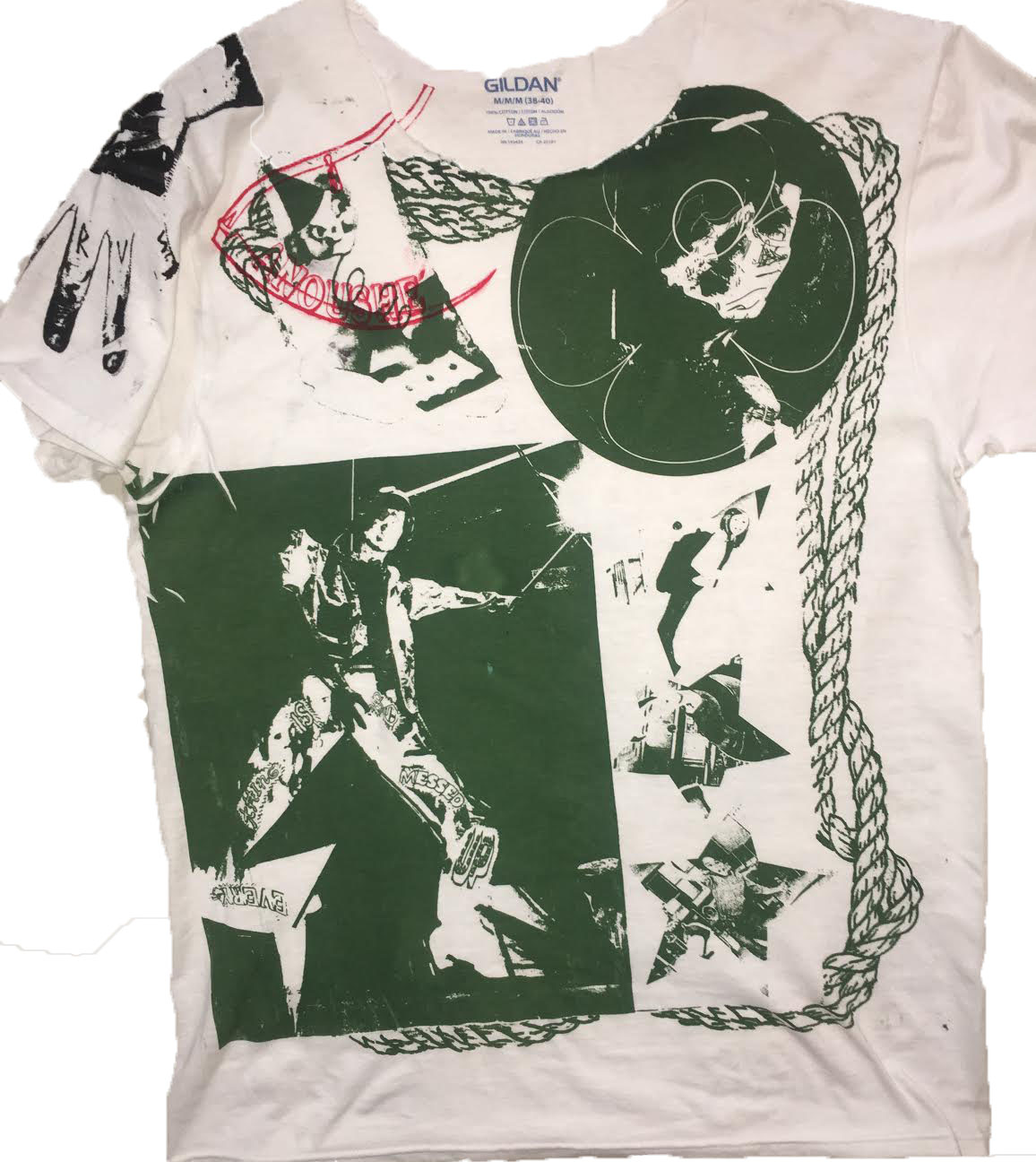
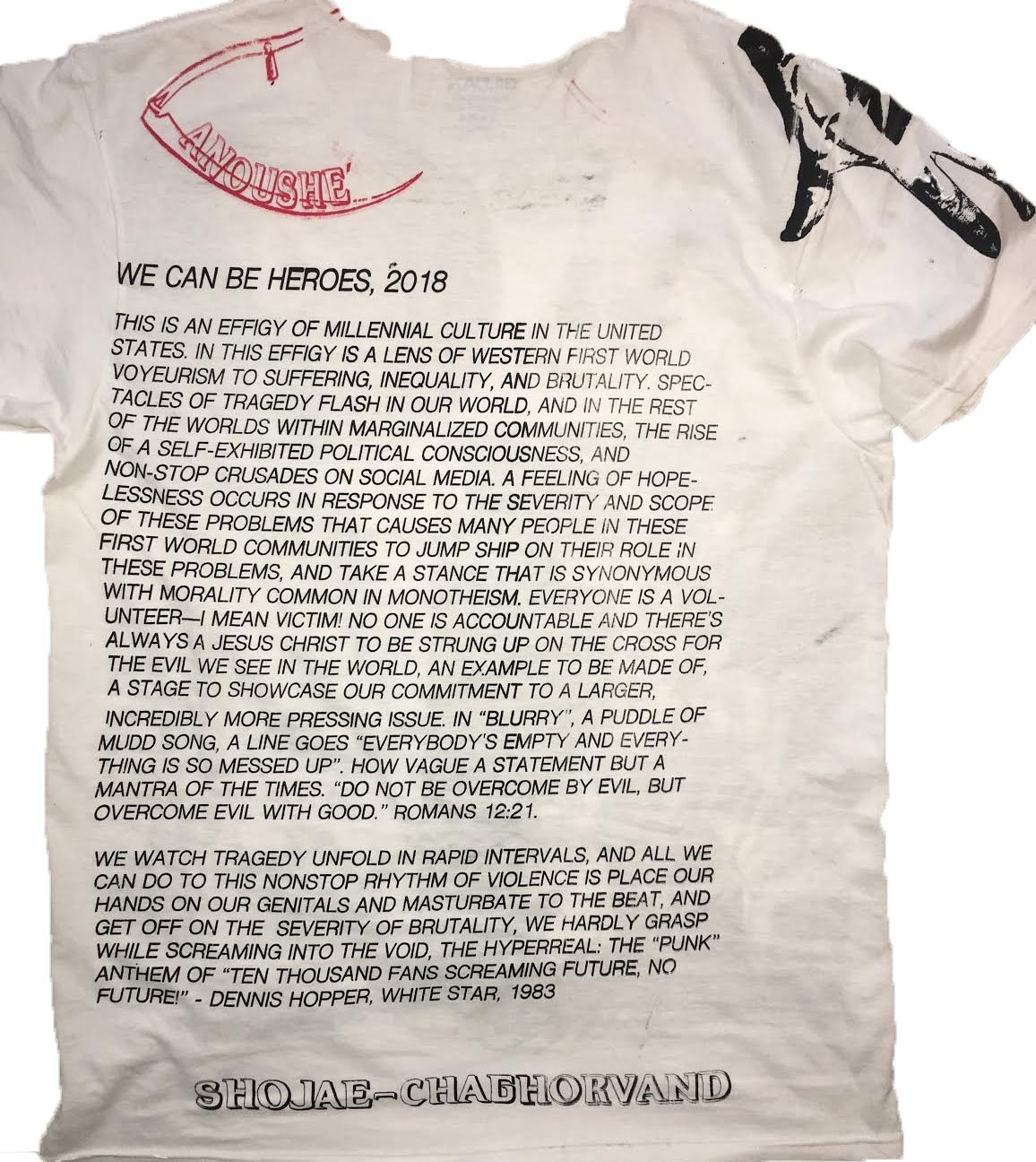

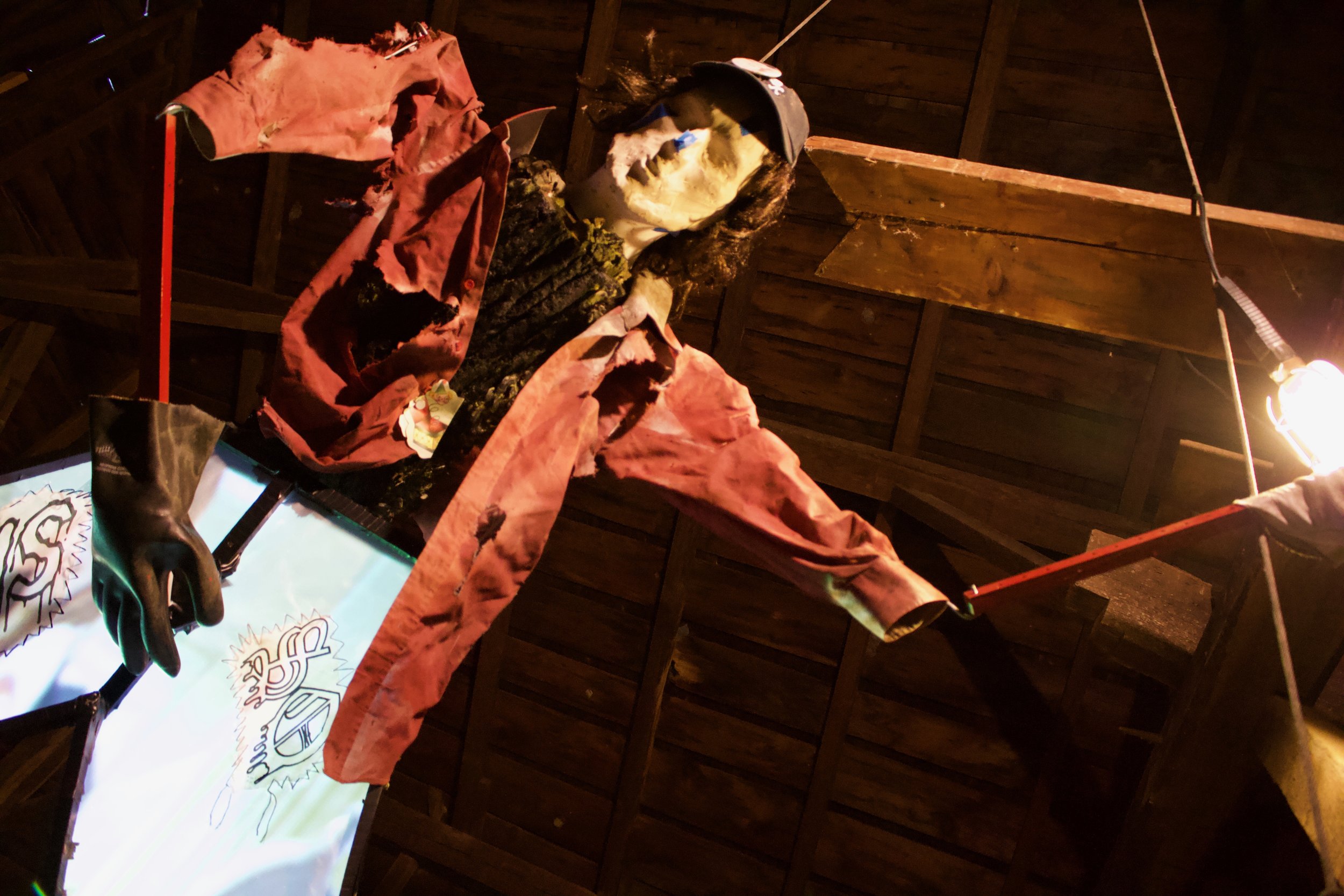

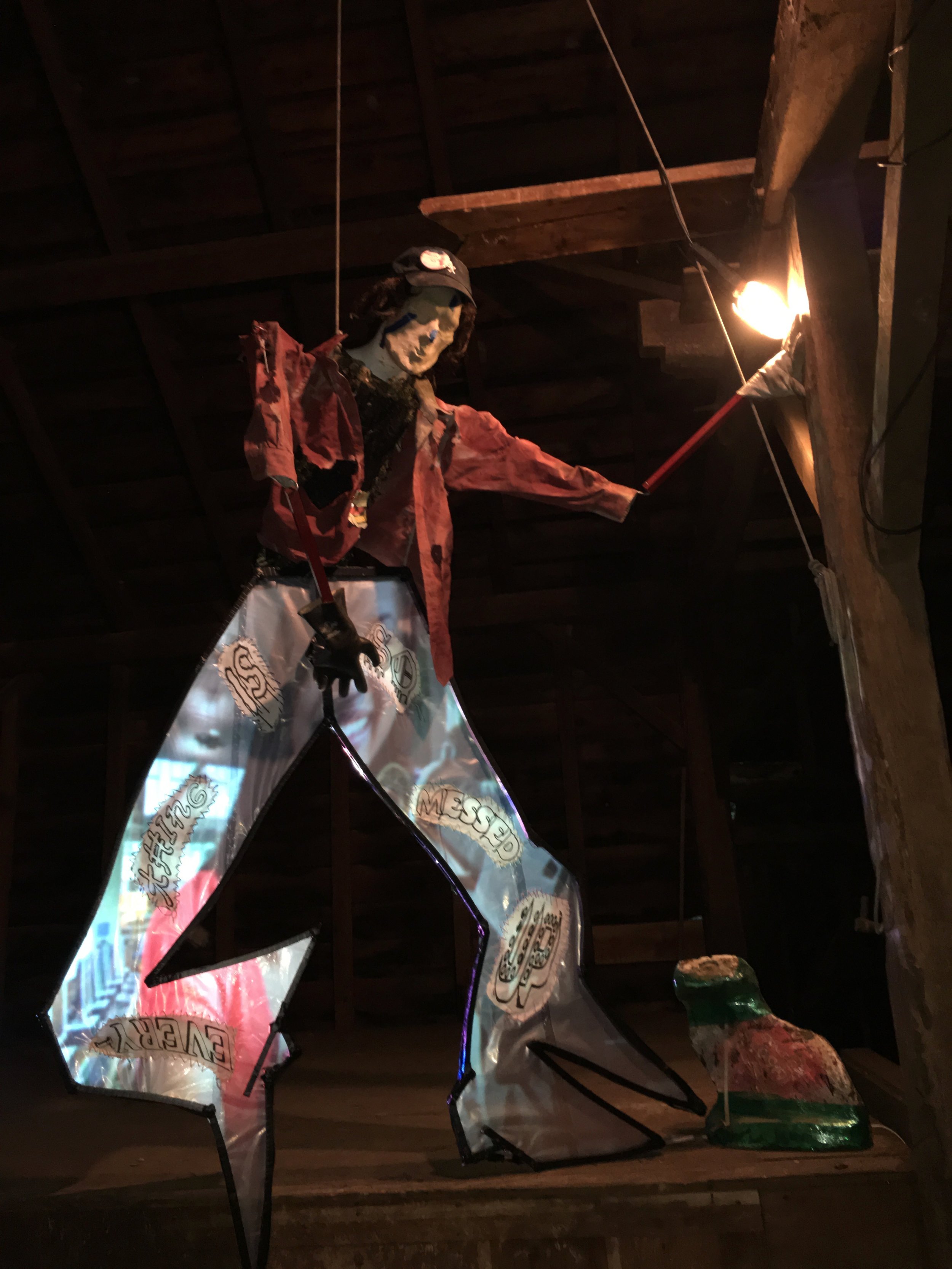


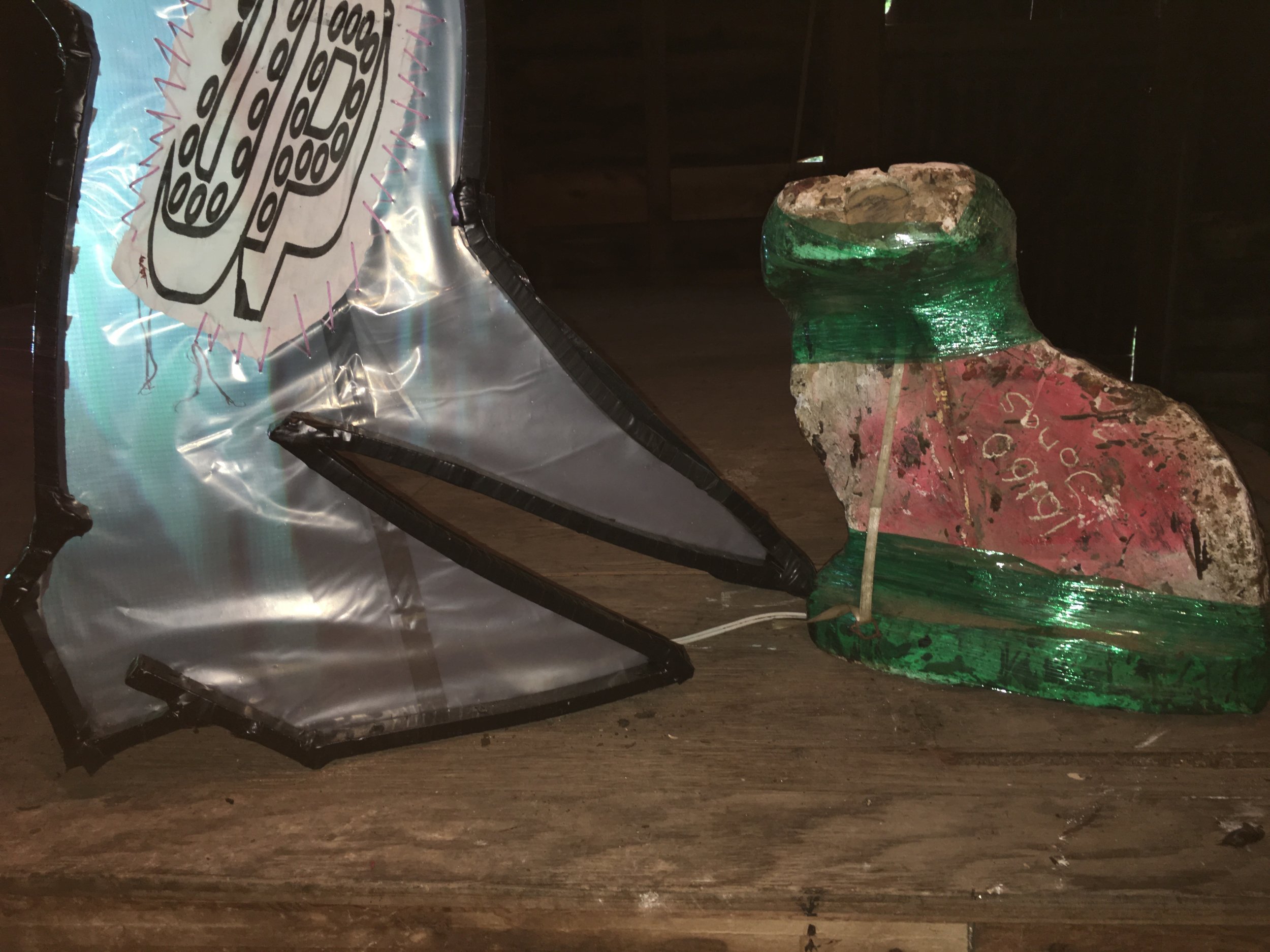

This is an effigy of millennial culture in the United States. In this effigy is a lens of western first world voyeurism to suffering, inequality, and brutality. Spectacles of tragedy flash in our world, and in the rest of the worlds within marginalized communities, the rise of a self-exhibited political consciousness, and non-stop crusades on social media. A feeling of hopelessness occurs in response to the severity and scope of these problems that causes many people in these first world communities to jump ship on their role in these problems, and take a stance that is synonymous with morality common in monotheism. Everyone is a volunteer—i mean victim! No one is accountable and there's always a Jesus Christ to be strung up on the cross for the evil we see in the world, an example to be made of, a stage to showcase our commitment to a larger, incredibly more pressing issue. In “Blurry”, a Puddle of Mudd song, a line goes “everybody's empty and everything is so messed up”. How vague a statement but a mantra of the times. “Do not be overcome by evil, but overcome evil with good.” Romans 12:21.
We watch tragedy unfold in rapid intervals, and all we can do to this nonstop rhythm of violence is place our hands on our genitals and masturbate to the beat, and get off on the severity of brutality, we hardly grasp while screaming into the void, the hyperreal: the “punk” anthem of “TEN THOUSAND FANS SCREAMING FUTURE, NO FUTURE!” - Dennis Hopper, White Star, 1983
This installation was shown in a Dutch barn made out of a now extinct variety of American chestnut, through a three week residency offered at artists Dave Cole and Jennifer Khar’s property in Hudson, New York. The barn used to be the personal studio of Louis Paul Jonas (1894-1971). Jonas was an American sculptor of wildlife, taxidermist, and natural history exhibit designer.
A sculpture by Anoushe´Shojae-Chaghorvand
